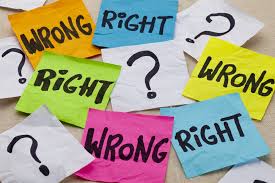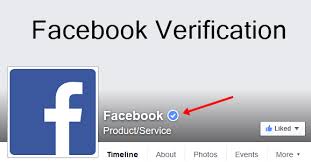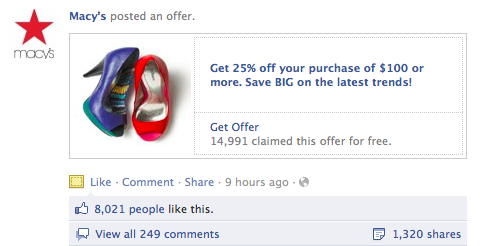As social media grows, so does the business influence it has on consumers. With growth and technology comes education. The need for understanding how to best leverage Facebook for business is rapidly growing. It is critical to avoiding a Facebook faux pa which can affect the presence of your brand online, and the way your potential clients view your brand. Leveraging Facebook for business properly can generate significantly more interest in your brand, improve the likelihood of sales of your products and/or services, and gain your greater online exposure. If you are interested in some stats, and SMM strategies, check out How To Create Good Content on Social Media.
Facebook Faux Pas – What Are They?
Let’s take a look at the most common mistakes that are made when companies are using Facebook for business. Understand this isn’t the exclusive list of things that can be leveraged wrong, just the most common. In case you are wondering about why I’m only talking about Facebook here, it’s because it is the largest of the SM platforms and the one that is most commonly used by businesses. Facebook owns more than 3/4 of all social logins. That is an insane number which comes from the more than 1 billion people that logon daily. Yes, DAILY! So, let’s talk faux pas!
Business Vs Personal
You already have a personal page. A place where you have “Friends” and share selected parts of your life with them. This is how others see YOU, but your business brand is deserving of its own page. It’s not just because this is against Facebook’s Terms of Service, but it’s because your business is a business, not a person. A business page is set up to provide the kinds of data and insight needed to determine the effectiveness of your social media efforts. Your personal page won’t tell you information about your demographic, times of day you’re most popular, or what posts gain the most attention. Your business page, however, will. You’re not doing yourself any favors by not leveraging these tools.
There’s also a bevy of features on Facebook for business. These help your customers see more about your brand, that you can’t get on a personal page. A business shouldn’t have “friends”. It should have followers, people that reflect the popularity and interest of your brand. The page should have “likes” that reflect how desirable your brand is. It should have reviews and testimonials to reflect the quality and stability the brand offers. What else does your business page have? Tools to create a Call to Action. A one-click action button to allow customers to “Call Now”, “Watch Video”, or “Play App” allows for easier access to your products or services. Use this button! Set it up with the options best suited for your business and your communication strategies.
Verification Matters
When you are using Facebook for business, you need to make sure your business page is verified. You can tell if a business is verified by Facebook by looking to the right immediately after the page name. You’ll see a checkmark inside of a colored circle. If you don’t see this, your page isn’t verified. Verification processes will vary depending on if you have a physical business address or not. So why should you verify your page? For starters, it’s a clear indication to your customers, colleagues, referral partners, etc. that your page is authentic. It also tells Facebook you are the legitimate you. Should a fake page, or a clone page, be an issue, both your followers and Facebook will be clear on who you are and who to prioritize.
You’ll also get favorable search results. People use Facebook as a search engine, like Google, to find brands on Facebook. Facebook’s algorithms are designed to favor verified pages. This will help you gain greater exposure to the world of Facebook users. Lastly, you want to verify your page on Facebook because you want to know how to use its features. Facebook, like most successful technology companies, changes and improves often. Each time new features & tools are released to Facebook for business use, verified pages receive these first. This, over time, gives you an edge over competitors who may not be verified.
Don’t Forget the Vanity URL
When you first create your page, your Facebook URL will look like gobbledygook with a set of generated numbers at the end. By setting up your vanity URL, you can simplify your Facebook URL. My Facebook URL is now as easy as www.facebook.com/shineconsultingbiz. This provides a shorter URL, that’s easier to remember and share, and is more consistent with your branding.
Create Offers and Track Milestones!
Another cool thing you can do on Facebook for a business page that you can’t do on a personal page to create engagement is to leverage the “Offer, Create+” button. When posting, you have the option to Create an Offer, Add an Event, Add a Milestone, or Make a Note. Create an Offer allows you to showcase a product or service and provide a Sale (percentage, amount, or BOGO) or promote Freebies you may have. This tool allows you to select the valid dates, create coupon codes, add up to 5 images, and include any T&C. Your followers will see this Offer on your timeline and in their Newsfeed.
Make an Event allows you to make a calendar event connected to your business. You can invite selected people, track their RSVP, promote the event, etc. Your followers can see this Event on your timeline, and they will receive a notification if they have been invited.
Add a Milestone is where you can archive and track your Milestone worthy accomplishments. Awards, recognition, product releases, major events, etc. could be potential Milestones. Hiring extra employees, celebrating 5 years in business, expanding your office. More Milestones. Your followers will see these on your timeline and it’s a great way to share your successes with your followers. Make a Note is self-explanatory and formats with your business name and logo within the note for consistent branding. You can upload a picture as well. You have to add Notes to your page tabs to allow your followers access. Since this seems to change often with Facebook updates, I’ll link to the Notes Help Center on Facebook so you’ll always have the up-to-date information.
Post Strategy
This is the most common faux pa that I see when using Facebook for business. Rather than talk much about it here, I’d rather circle back to the article linked in the initial paragraph. How To Create Good Content on Social Media is where you’ll find the information needed to get started on boosting engagement, getting more views, and posting enough to be in front of a larger audience. If you’re curious, you can find out more about custom Social Media Marketing Training and/or watch for future social media presentations I do on the Unwritten Rules of Social Media. You can always request a presentation with your organization. Without getting off track, check out the first link and learn the three most important steps of using Facebook for business more efficiently.
Incomplete Pages
There are several areas in which I see folks will often skip completing their pages, that can have a negative effect on the message it delivers their customers, and the information they’re able to obtain. When using Facebook for a business you need to have a complete “About” section showcasing the various areas of your business. From basic contact info to your location, hours, Mission Statement…you get the idea. Having as much educational data as possible without cluttering the page is ideal. Having some details on the “Services” tab, or “Notes”, when applicable, can be greatly beneficial to the right business. Remember that Facebook is used as a search engine by many of it’s 1.65 billion viewers.
There will be customers and connections who find you for the first time on Facebook, or they’ll find your Facebook on your website. Don’t leave these folks in the dark by not having enough information on your page. Always remember, KIS KIC! Keep it Simple, nontechnical. Keep it Clean, no clutter and no excess of info. Don’t forget to include a cover photo and a profile picture. Your page is an extension of your brand so you want good images consistent with that branding. Don’t assume your followers have seen you, or your website, first.
Missed Messages
Anyone can send messages to your business page. Your personal page uses or can use Messenger and this is a little different as far as notifications are concerned. You won’t get the pop-up messenger notifications the same way. You’ll have to check the World Notifications within Facebook on a desktop or in the app. This can slow your response time down a bit. Though I’m not a fan of not being able to connect Messenger to your business page, it is currently the only option. Facebook defaults to keep track of your response speed and present badges to notify your followers of your average response time. As an example, you could have “Very Responsive to Messages” badge for replying within minutes, or have “Typically Replies Within The Hour” Badge. There are also badges for responding “Within a Few Hours” and “Within a Day”. While it is not required to have the more responsive badge, it will cater to the instant gratification desire that many social media users have when they see this on your page.
I recommend at least being able to reply to everyone the same day. The faux pa that happens with this tool is folks not knowing their options for changing the settings here. What’s important to know is that only the first response time to an initial incoming message is used to calculate, so each response after that to the same person does not factor in. Some folks that have discovered the settings for Messages have an Instant Reply set up. This does not count towards your time, so you still need to reply to the original inquiry timely to improve your badge. You can set your messenger to “away” to respond with a canned message and once you log back on, your time starts determining your response speed. If you are like me and have a mobile app, you are probably always logged in any way.
It is important to note that if you miss a week of logging onto your business page, your response badges will disappear and you have to start over again. Don’t let the response timing and badge be the focus for concern, because it isn’t that critical in my book, but you certainly don’t want to miss messages. I do suggest that you leverage the settings to your best interest because you know how quickly you are able to get back to people.
Cross Posting / Sharing
I’m hoping you read the linked article for creating good content. This is an add-on to that. I see a lot of people post a lot of their business related ‘stuff’ on their personal pages. Although that feels like you’ll get it to a larger audience, it weakens the engagement and content of your business page when followers arrive. Always place your business postings on that business page and then use your personal page to Share that content to your connections. This prevents the engagement from being taken away from your business page. Plus, new followers who arrive will still see fresh content. Get in the habit of doing it this way even though it’s a little longer. It’s better for your search engine marketing in the long run when you use Facebook for business this way. Unlike LinkedIn (hint, hint LinkedIn) you can access your business page, and publish content, using the mobile app.
Employee Conduct
The final faux pa I see is businesses having employees connected to their page. This isn’t a problem. In fact, when you have employees who engage in social media a lot, it can raise awareness for your brand. It can display you as a generator of jobs and a motivator of people. If done right, it is a powerful tool and your employees can participate in your social media marketing campaigns. What happens far too often than I’d like to see it is that employees participate in behavior that is damaging to the business/employer. Your employees are an extension of you. What they say and do and how they treat people can be perceived as how your brand is. Always have a code of social media conduct for yourself and in your SOP. Enforce it!

How will your employees know to represent their connection to you on social media if you don’t tell them?
Consider only having selected employees connected to your company if you have good employees who have a hard time staying out of Facebook trouble. This information isn’t intended to scare you, but to make sure you don’t get into a challenging PR nightmare because an employee made a bad social media judgment call. I’ve seen a lot of negative situations occur so be aware if nothing else. I strongly recommend having a Code of Social Media Conduct as part of the employment. While I’m not a fan of forcing a Facebook friendship with an employee, I do recommend “following” your employees or having a strategy to review online conduct. I’ve seen employees create a backlash for businesses via racial slurs, cruel offensive name calling, drug use, etc. This is definitely a large, and grey, area, so feel free to reach out to me to chat more about this one! For reference points, I found a fantastic blog post on 5 Terrific Examples of Company Social Media Policies.
Facebook for Business
To conclude, I hope this has been helpful and that if you have been making any faux pas, you have the information to make more efficient changes and strategies to better leverage your page. If you don’t have a business page yet, you’re about to and you have plenty to keep you busy.
You may be running into a particular faux pa, or a potential faux pa, not listed here. If you need a little help, or you aren’t sure of what you’re looking at, let’s set up a complimentary review of your social media. If you are a big user of another platform and have faux pas you’d like in a future article, submit them to me. General questions on other platforms? No problem, we can discuss and review that in your complimentary review. If you have any questions about how to do any of the items discussed here and you aren’t having luck finding help on Facebook, we can help you head in the right direction.




